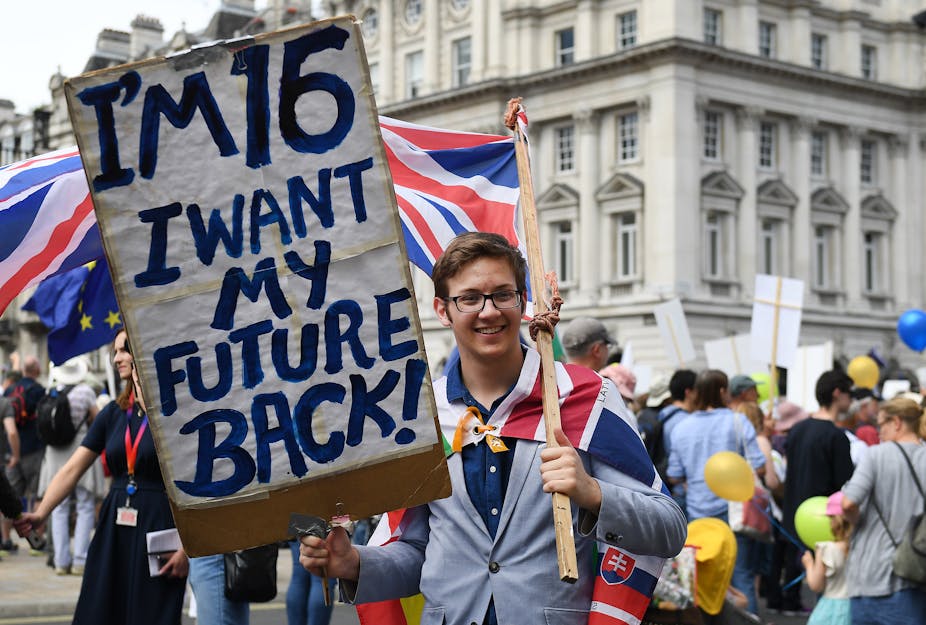Despite publishing a white paper on its future relationship with the EU, there is still no clear UK government policy on what will replace the free movement of people after Brexit. The white paper suggests a new “mobility framework” but this seems to be little more than a buzzword with little substance behind it.
These details will be the job for a separate white paper and an immigration bill, which the government says “will bring EU migration under UK law, enabling the UK to set out its future immigration system in domestic legislation”. This will probably come later in 2018, following recommendations from the Migration Advisory Committee, due in September.
Read more: Britain's Brexit plan revealed: experts react
Much of the white paper section on immigration proposes that the rights of citizens from the European Economic Area (EEA) who come to the UK once free movement stops at the end of the Brexit transition period in December 2020 will be similar to those currently held by non-EEA citizens. While the white paper doesn’t give away much on the UK’s future immigration system, it contains a novel proposal to establish a “UK-EU Youth Mobility Scheme”.
Youth mobility
The current UK immigration system is points-based and divided into tiers for different types of visa. Tier 5 is for temporary migration – and the white paper proposes to extend it after Brexit.
The UK currently has a reciprocal Youth Mobility Scheme (YMS) under Tier 5 with eight countries on a quota basis, with the majority of visas being allocated to Australians. The YMS visa allows young migrants, aged between 18 and 30, to work in the UK without a job offer, with no certification or employer sponsor requirements for up two years. There were 41,652 youth mobility visas granted in the year to September 2017, down 1% on the previous year. It’s a very liberal but nonetheless strictly temporary visa with no settlement or family reunification rights. Because there are no employer sponsorship requirements, very little is known about the labour market activity of these migrants.
Research I’ve been working on has found that young Australians on the YMS are the ideal migrant for both the state and employers alike as they take on precarious but skilled jobs in the UK labour market, without the electoral costs of permanent migration. The public is more concerned about permanent than temporary immigration, and according to research from the University of Oxford’s Migration Observatory less than a third of the public reports thinking about temporary immigrants when normally thinking about immigration.
The government is now proposing an EU-UK youth mobility scheme that would facilitate young, strictly temporary migration between the UK and the EU in the same way. Presumably it would also be based on quotas. How these visas would be allocated between member states will be a crucial detail, given that in clause 78 of the white paper, the UK says it will not discriminate between existing member states.
This is perhaps the only proposal so far that addresses the elephant in the room: how the government can continue to attract EU workers to come to the UK after Brexit. But whether the proposal will provide any remedy to the looming labour market crisis following the end of free movement really depends on how big the scheme is. In any case, with no settlement or family reunification rights, a new YMS system for EU citizens is certainly not a replacement for free movement.

Seasonal workers and students
Previously, the UK had a successful Seasonal Agricultural Workers Scheme which allowed young people to work in UK agriculture or horticulture for a temporary seasonal period. Curiously absent from the white paper was any proposal to re-establish such a scheme – a move which seemed likely in light recent comments by Michael Gove, the environment secretary, earlier this year, that the argument for one was “compelling”.
Meanwhile, the mantra introduced by the New Labour administrations of attracting the “brightest and best students” remains. Data from the UK Council for International Student affairs suggest that 6% of students in UK universities are from the EU. Presumably EU students will now face the same triple tuition fees at UK universities as other non-EEA students pay in the UK. Whether the UK will continue to attract these students despite this remains an unknown. Judging by the white paper, the government doesn’t appear to be concerned that the higher fees will deter these prospective students – though it has promised to keep fees the same for EU students for the 2019-20 academic year. A key proposal is for the UK to remain in the Erasmus student exchange programme – surely something the EU won’t accept given that Erasmus is by definition an EU student exchange programme.
Overall, it seems unlikely that the EU will accept the white paper, and judging by the factionalism within the Conservative party, it might well be dead by the end of the summer anyway.
Ending free movement has been the driving force for a hard Brexit. While May could yet water down elements of the agreement to give more preference to EU citizens, free movement is definitively a red line for the UK government and the EU alike, a fact that the prime minister knows. The government may want to have their cake and eat it too, but the EU bakery isn’t selling the cake they want, and won’t be anytime soon.

